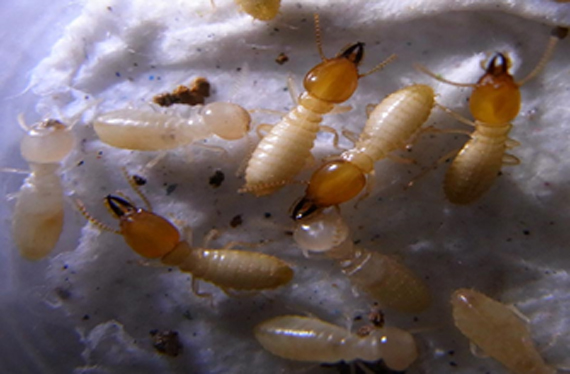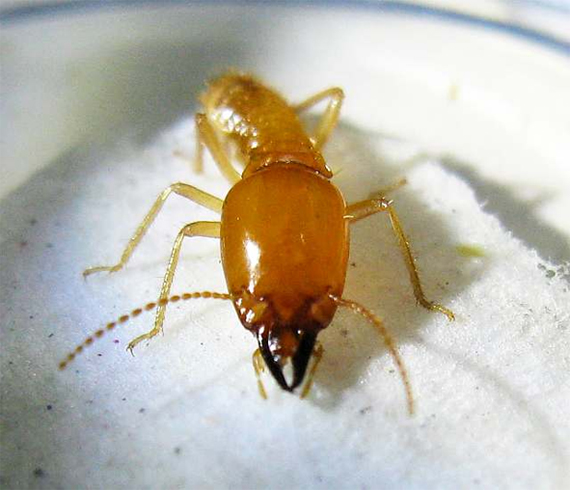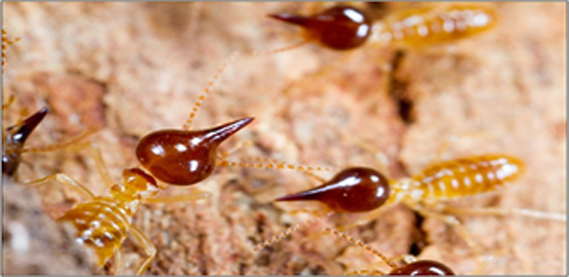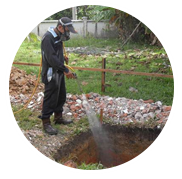
COPTOTERMES VASTATOR
(Philippine Milk Termite)
IDENTIFICATION
It is widely distributed in all the provinces and islands of the archipelago and responsible for over 90% of termite damage made to timber and wooden structures in Metro Manila and other urban areas.
HABITS AND BEHAVIOR
C.Vastator builds primary nest deep underground. Secondary nest, however, is often found inside infested wood. The secondary nest is made up of a material called cartion, consisting of soil and chewed wood particles cemented togerther with saliva and excrement.
Macrotermes Gilvus
(Mound Building Termite)
IDENTIFICATION
This species is what comes to popular mind when the word termite (anay) is mentioned. They are the species responsible for the construction of the so called punso (mound) around rural areas.
HABITS AND BEHAVIOR
M.gilvus readily attacks wood in direct contact with damn ground. The attack is made long the softer portions (sapwood) of the wood leaving the harder portions (heartwood) and a thin outer shell intact. As the wood is consumed, the empty spaces are filled up with soil, maintaining its original size and shape


Microcerotermes
(Los Banos Termite)
IDENTIFICATION
A relatively small termite and the workers are often mistaken for larvae of beetles or other insects. However, the soldier is very conspicuous. It has long rectangular head with long horn like mandibles that is finely serrated at the inner margins
HABITS AND BEHAVIOR
M. Lasbanosensis builds their primary nest deep in the ground. Secondary nest, however, are often built on the surface of the ground, on bases of trees and in beams or wall of houses.
Nasutitermes Luzonicus
(Luzon Point Head Termite)
IDENTIFICATION
has a brownish-black to reddish-brown pointed head. This characteristic sets them apart from other light colored nasute termites widespread throughout the country. The body is weakly chitinized with light brown abdomen (tergites). Workers have dark brown head with pale brown abdomen.
HABITS AND BEHAVIOR
N. luzonicus is both subterranean and arboreal in habit. Their primary next, containing the king and queen, is located deep underground but their secondary nests are built in branches and trunks of trees or within walls of structures.


3 kinds of Termite Management:
-
Post Construction Treatment
- involves the establishment of a continuous chemical barrier after the structures is built and final grade installed.
-
Pre-Construction Treatment
- involves the establishment of a chemical barrier (horizontal and vertical), while the building is under construction.
-
Baiting System
- A new method used to control subterranean termites is the use of baits.